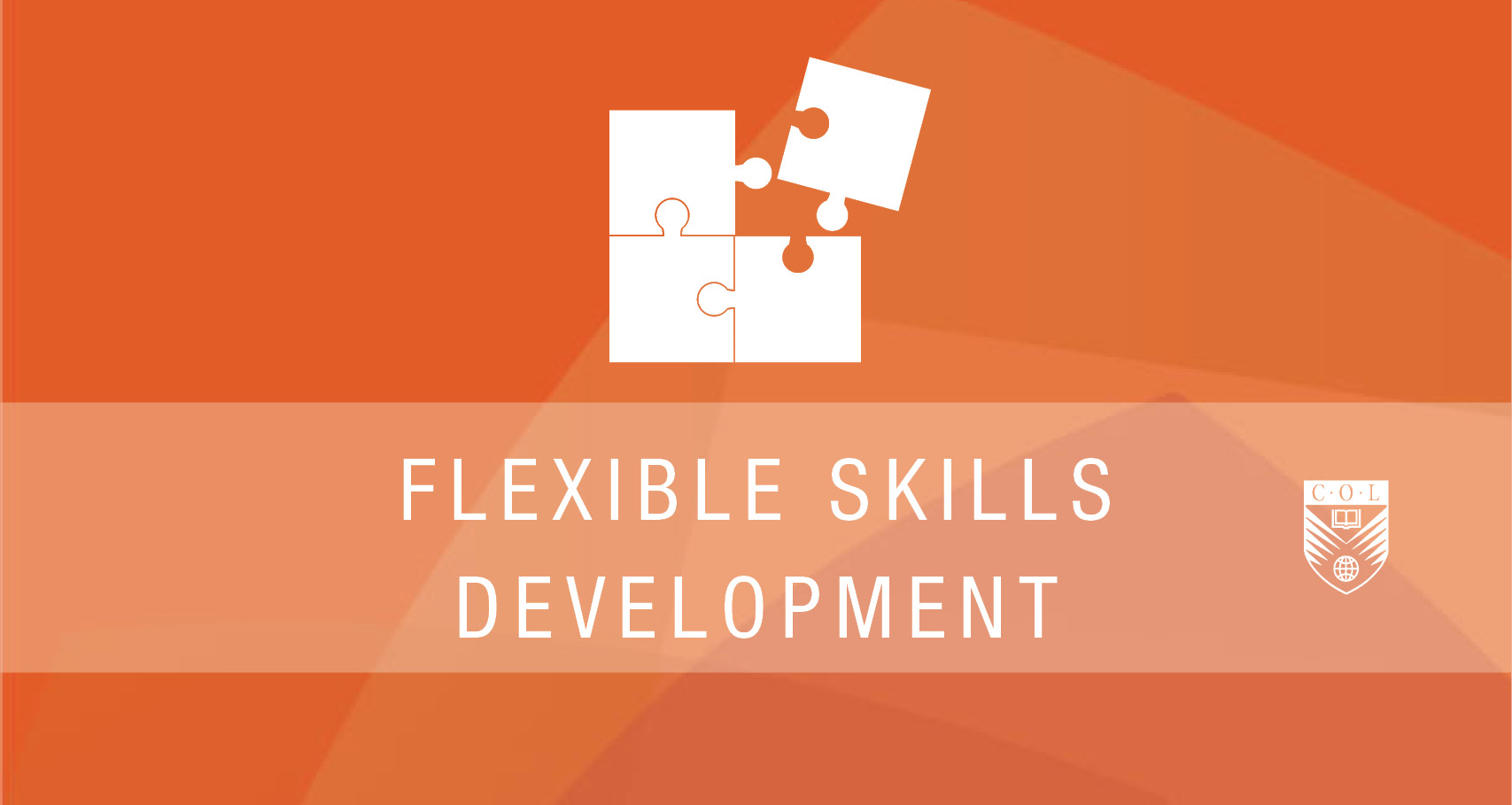Course Overview
COL developed this course to assist managers and educators of TVET institutes to explore issues involved in introducing blended and technology-supported learning strategies into formal TVET systems and institutions. The course is designed to be offered with a facilitator supporting cohorts of learners. However, individuals may find it helpful to work through the course to build their own understanding of flexible skills development. The course is designed to be delivered over six weeks, with participants needing 2-3 hours per week to participate in the course discussions and activities.
Learning Outcomes
- Describe flexible learning terms commonly in use, (as reflected in the FSD course).
- Range: blended learning; flexible learning; open and distance learning; e-learning; m-learning, synchronous and asynchronous learning.
- Identify the range of issues concerned with implementing new learning strategies in own country context.
- Range: policy; ICT infrastructure; change management; CPD, leadership; learning materials; pedagogy and research; quality assurance, learner demographics
- List the components of a typical country policy framework in support of flexible learning.
- Range: ICT; ODL; e-learning; Open Source; OER; Access; PLAR (RPL/APL)
- Identify and describe 21st Century learning and teaching tools exhibiting teacher capabilities in association with content creation, storage, and delivery methods and platforms.
- Range: online LMS, cloud-based sharing tools, online information and resource channels, audio and video creation software, animated cartoon software, PowerPoint conversion tool.
- Describe the change management initiatives that may be present in a typical strategic framework in support of flexible learning and blended learning.
- Range: Institutional management and leadership; curriculum and assessment; benchmarking

